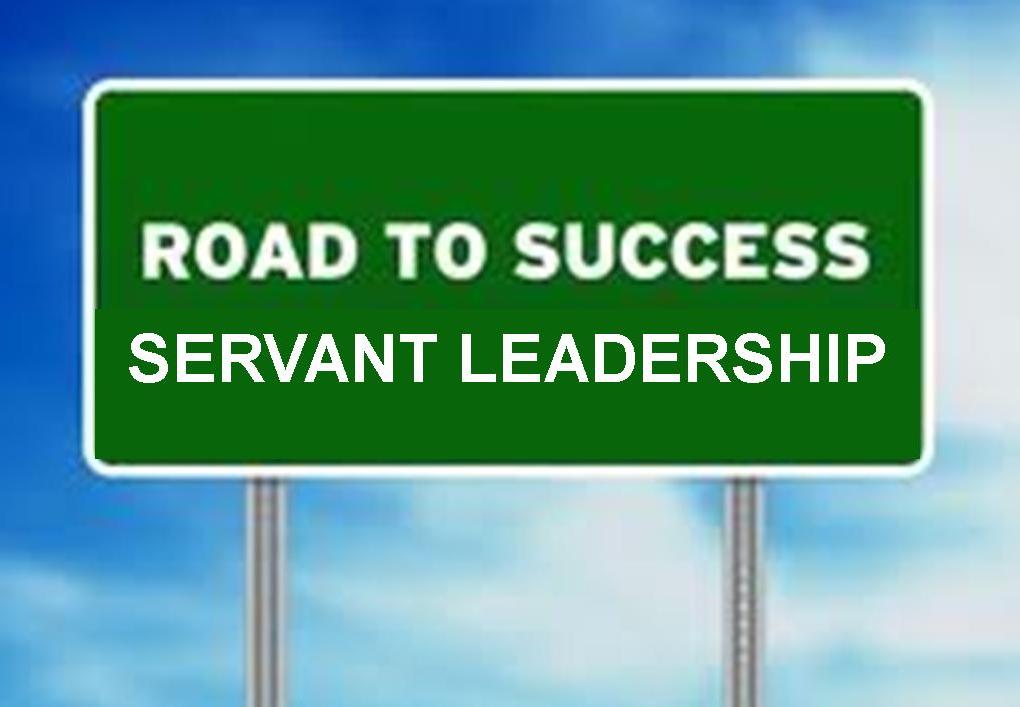 NOTE: Happy summer to you! Today, we begin our 12-week series on servant leadership using the book, Practicing Servant-Leadership: Succeeding Through Trust, Bravery, and Forgiveness by Larry C. Spears and Michelle Lawrence as our guide. I have been engaged in serving as a volume editor on an upcoming book with Palgrave MacMilliam about Servant Leadership and Spears and Lawrence’s book gives us valuable insight into Servant Leadership with 12 contributors in their book. Look for our book on Servant Leadership with 13 fabulous authors/contributors later in 2017! Let’s get to it….
NOTE: Happy summer to you! Today, we begin our 12-week series on servant leadership using the book, Practicing Servant-Leadership: Succeeding Through Trust, Bravery, and Forgiveness by Larry C. Spears and Michelle Lawrence as our guide. I have been engaged in serving as a volume editor on an upcoming book with Palgrave MacMilliam about Servant Leadership and Spears and Lawrence’s book gives us valuable insight into Servant Leadership with 12 contributors in their book. Look for our book on Servant Leadership with 13 fabulous authors/contributors later in 2017! Let’s get to it….
“Allow the way to your great work to be guided by your service to others.”
~Mollie Marti
Who is a Servant Leader? The first chapter delves into this question and provides a short excerpt by from Robert K. Greenleaf’s seminal essay, “The Servant as Leader” which contains the essential understanding and definition of servant leadership in the book, Practicing Servant-Leadership: Succeeding Through Trust, Bravery, and Forgiveness by Larry C. Spears and Michelle Lawrence.
Greenleaf presents us with two questions, to which he answers with a resounding yes concerning a servant leader. He asks, “Servant and Leader- can these two roles be fused in one real person, in all levels of status or calling? And, in so, can that person live and be productive in the real world of the present? The first chapter is an attempt to explain why and to suggest how.
Greenleaf crystallized his vision of servant leadership through his reading of the novel, Journey to the East by Herman Hesse, a work that deeply moved Greenleaf. In the story, the servant, Leo, was the caring leader. Leo’s leadership style was that of a servant such that the people claimed that they did everything themselves.
On the journey, Leo disappeared. The group fell apart and abandoned the spiritual quest. The group realized they needed Leo. Years later, the narrator found Leo and learned Leo was the head of the noble order, its guiding spirit, and a great leader. The narrator had only known Leo as a servant. Indeed, a leader who exemplifies servant leadership, such as Leo, can see the effect of his or her leadership through the growth of the people. Who is a servant leader? A servant leader serves first, just as Leo was portrayed.
Greenleaf goes on to say that when he came upon Hesse’s book in 1958, he had been listening (as always) and searching for voices of prophecy, those who spoke of truth for the benefit of humankind. He knew the message in Hesse’s book was of a prophetic nature.
Greenleaf puts it this way, “I now embrace the theory of prophecy which holds that prophetic voices of great clarity, and with a quality of insight equal to that of any age, are speaking cogently all the time. Men and women of a stature equal to the greatest prophets of the past are now with us, addressing the problems of the day and pointing to a better way to live fully and serenely in these times.”
What is fascinating is that Greenleaf understood that prophetic vision is directly tied to the level of seeking and the responsiveness of the hearers. So those prophets grow in stature as people respond to their message. Indeed, it is the seekers, then, who make prophets. Isn’t that beautiful? Doesn’t it give us a perfect example of servant leadership?
Being careful not to ignore the great voices of the past, Greenleaf says that servant leaders do not wake up each morning with the compulsion to reinvent the wheel, rather if one is a servant – either leader or follower- one is always searching, listening, experiencing a better wheel for the times in the making. It can emerge any day, and any one of us can discover if from our personal experience.
Servant leadership is positioned to help us today. Greenleaf was hopeful then that despite tension and conflict in the world, there would be more natural servant leaders, like you and I, to see clearly the world as it is and to listen carefully to the prophetic voices that are speaking now.
Servant leaders, that is, you and I, are challenging the pervasive injustice with greater force, and we are taking sharper issue with the disparity in the world concerning the quality of society, available resources, and the performance of the institutions that exist to serve society. We see that right now, through the servant leaders who are stepping forward in service to the recent tragedy in Orlando. Indeed, we are helping the world to relate to one another in more supporting ways and less coercive and hateful ways.
I choose to remain hopeful.
Greenleaf tells us specifically and concretely, “A new moral principle is emerging., which holds that the only authority deserving one’s allegiance is that which is freely and knowingly granted by the led to the leader, in response to, and in proportion to, the clearly evident servant stature of the leader.”
Phew, isn’t that powerful? The allegiance of the led is granted to the leader only through and by the evidence of service by that leader.
In the end, Greenleaf believed that Hesse was telling us in his book that Leo is the symbolic personification of Hesse’s’ aspiration to serve through his literary creations- creations that were greater than himself- and his work, for which he was but the channel, will carry on and serve and lead in a way that he, a twisted a tormented man, could not, as he created.
Isn’t that the dilemma for us all as servant leaders? As we create, and as we emerge as servant leaders, we cannot project ourselves beyond ourselves to serve and lead.
Servant leadership is not a popular concept. It wasn’t then and its painstakingly making its way into the mainstream of leadership concepts today. Greenleaf reminds us that the danger, perhaps is to hear the analyst too much and the artist too little.
At the end of the day, I agree with Greenleaf, that Albert Camus was one of the great artists of his time and deserves the title of prophet. I have posted the last paragraph of Camus’s published lecture, entitled “Create Dangerously” many times on my Facebook page. It reminds me daily of my vision, my mission as a servant leader, and the reason why my circle of influence continues to emerge as servant leaders by my modeling and example of service.
Create Dangerously
‘One may long, as I do, for a gentler flame, a respite, a pause for musing. But perhaps there is no other peace for the artist than what she finds in the heat of combat. “Every wall is a door,” Emerson correctly said. Let us not look for the door, and the way out, anywhere but in the wall against which we are living. Instead, let us seek the respite where it is—in the very thick of battle. For in my opinion, and this is where I shall close, it is there. Great ideas, it has been said, come into the world as gently as doves. Perhaps, then, if we listen attentively, we shall hear, amid the uproar of empire and nations, a faint flutter of wings, the gentle stirring of life and hope. Some will say that this hope lies in a nation, others, in a man. I believe rather that it is awakened, revived, nourished by millions of solitary individuals whose deeds and works every day negate frontiers and the crudest implications of history. As a result, there shines forth fleetingly the ever-threatened truth that each and every woman, on the foundations of her own sufferings and joys, builds for them all.’
To Creating Dangerously,
Dr. Crystal
*Replaced [he] with [she] in the poem








